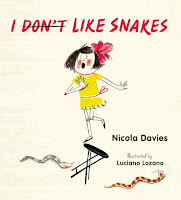The WonderlingLonely, shy, scared. The orphaned groundling Number 13 doesn’t have a name until he finds a friend in Trinket, a small wingless bird with a big heart. Full of stories, Trinket decides that Arthur is the perfect name for his friend--brave King Arthur. Can they escape evil Miss Carbunkle’s orphanage? Will they find their families? This delightful fantasy would be wonderful to read aloud as a family, or escape into its adventure by yourself.
by Mira Bartók
Candlewick, 2017
Google Books preview
Amazon / audiobook / public library
ages 8-12
*best new book*
Today, Mira Bartók is visiting Great Kid Books to tell us a little about building her fantasy world. As I read The Wonderling, I was especially intrigued by Arthur's world and his journey. I wondered how Mira created Arthur's world, especially if she used a map to help lay out his journey.
Mira Bartók: Creating the World of The Wonderling
When I began building the world of The Wonderling, my first task was to create the terrible orphanage where Arthur/Number 13 finds himself at the opening of the book. I knew it had to be surrounded by a great wall, and that it was impossible to see over that wall into the world beyond. But I wasn’t quite sure what the building looked like. I looked at dozens of old photographs of 19th century orphanages, but none of them seemed quite right. Then one day, while searching online, I found a wonderful old engraving of a building in the shape of a giant cross, surrounded by a wall. It looked to me like a monastery and I knew when I saw it that it was perfect. I imagined Miss Carbunkle’s Home to have been many things over time—poorhouse, asylum, and ultimately a home for unclaimed creatures—but its origins were holy.
 |
| the engraving that inspired Miss Carbunkle's Home |
 |
| a detail from one very, very rough sketch of Miss Carbunkle's Home |
It was hard to decide which part of my fantasy world I wanted to depict in one map—the vertical layers of the world, depicting Lumentown with Gloomintown below? Or map out the city of Lumentown, and show Arthur’s journey within the city? In the end, I chose to simply map out a landscape—the Home, Pinecone’s house, the Wild Wood, Lumentown, and the surrounded environs—so that readers could follow Arthur’s journey from start to finish.
 |
| final map for The Wonderling |
-----
Thank you so very much, Mira, for sharing a little bit about your journey as Arthur's story came to life for you. I am so happy to hear that there are more adventures in store for Arthur and Trinket! I am excited to share this with students throughout Berkeley as part of our Mock Newbery Book Clubs, and I can't wait to hear some of their thoughts reading this story.
THE WONDERLING. Copyright © 2017 by Mira Bartok. Reproduced by permission of the publisher, Candlewick Press, Somerville, MA. The review copy was kindly sent by the publisher, Candlewick. If you make a purchase using the Amazon links on this site, a small portion goes to Great Kid Books. Thank you for your support.
©2017 Mary Ann Scheuer, Great Kid Books












